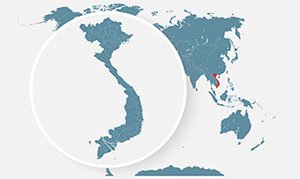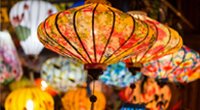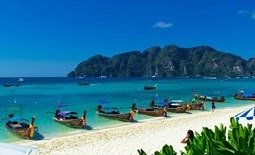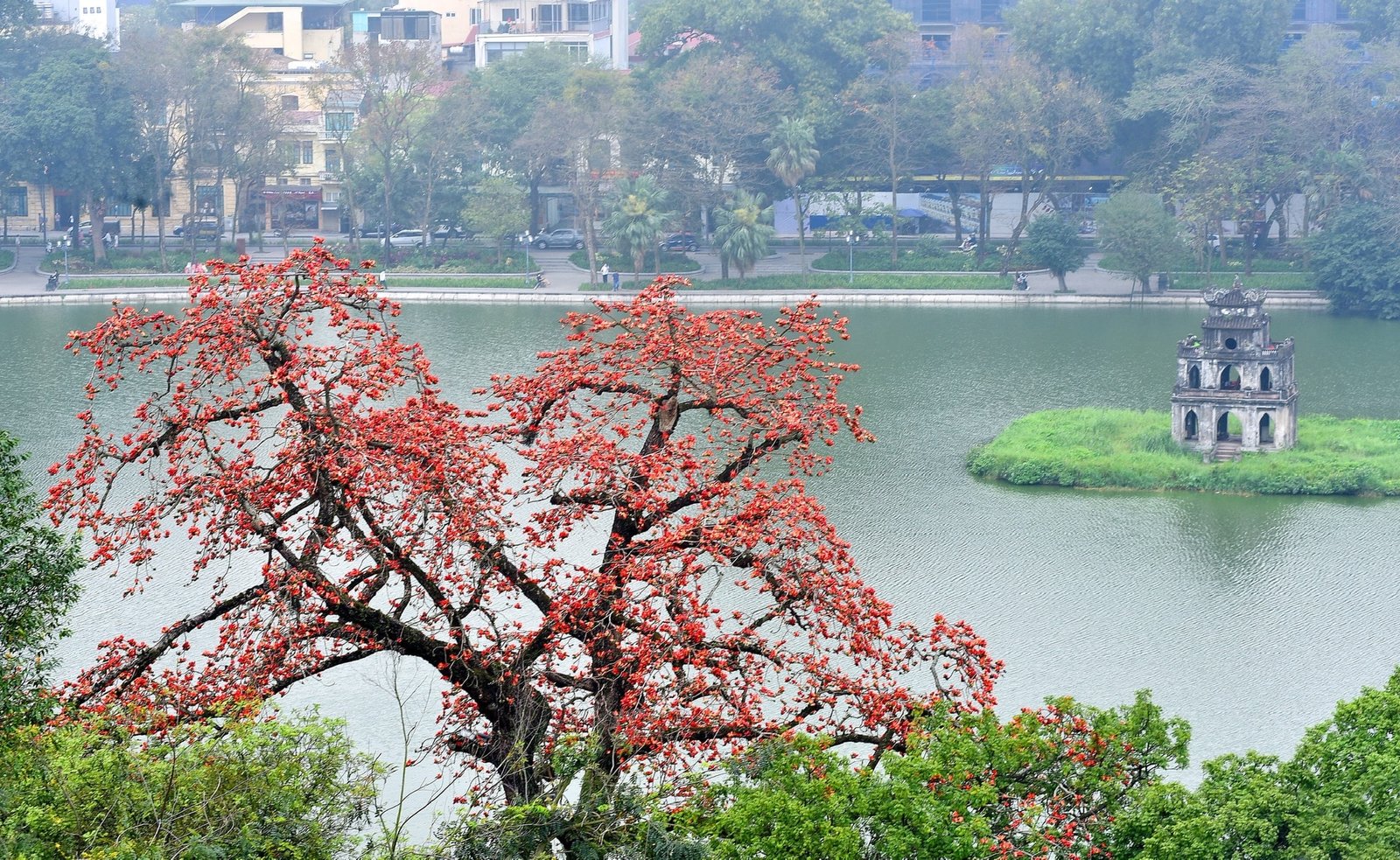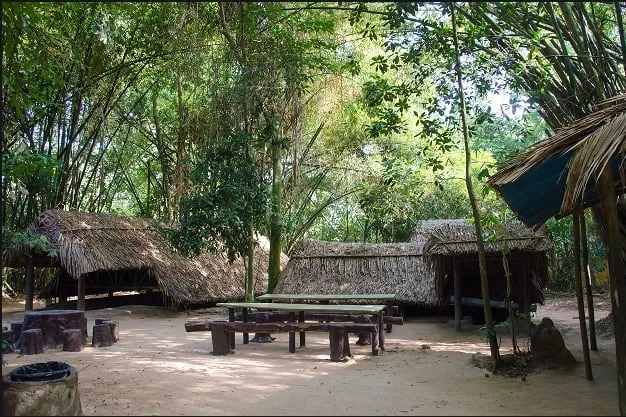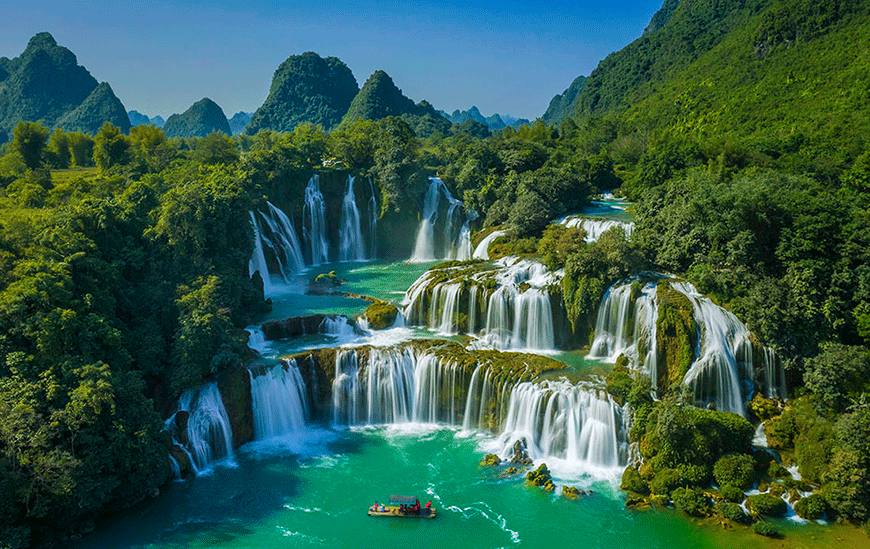Contents
ToggleWhere Is Hanoi Located?
Hanoi, the capital of Vietnam, is nestled in the northern part of the country, positioned gracefully along the western bank of the Red River. This river—originating in China’s Yunnan province—flows through the heart of northern Vietnam, shaping the region’s fertile plains and rich cultural history. Hanoi’s strategic location not only makes it a political and cultural center but also an ideal launching point for exploring a wide range of natural and urban destinations.
To the east, about a 3-hour drive from the city, lies the world-famous Halong Bay, known for its dramatic limestone karsts rising from emerald waters. Head south for around 3.5 hours, and you’ll reach Trang An in Ninh Binh, often dubbed the “Inland Halong Bay” for its otherworldly landscapes of karst peaks and winding river valleys.
Adventurers looking to venture into the highlands will find the mountainous regions of Sapa, Ha Giang, and Cao Bang to the northwest and northeast of Hanoi. These areas offer breathtaking scenery, terraced rice fields, and encounters with ethnic minority cultures that are unique to northern Vietnam.
Hanoi is also well connected to other major cities and regional capitals:
✈️ Domestic Flights:
- 1 hour to central destinations like Da Nang
- 2 hours to southern Vietnam, including Ho Chi Minh City
🌏 International Flights:
- Roughly 3 hours by air to key Southeast Asian hubs such as Bangkok, Singapore, or Kuala Lumpur
- What Makes Hanoi Unique?
- Hanoi is more than just Vietnam’s capital—it’s a city steeped in centuries of history, layered with tradition, resilience, and cultural depth. Its name, “Hà Nội,” meaning “city inside rivers,” was formally bestowed in 1831 by Emperor Minh Mạng, reflecting the city’s geographic embrace by three key waterways: the Red River, the Nhue River, and the Day River. But even long before that official naming, Hanoi had already served as the heart of several Vietnamese dynasties, earning a reputation as the country’s enduring political and cultural nucleus.
- What sets Hanoi apart is its seamless blend of ancient and modern life. At its core lies the iconic Old Quarter, a maze of narrow alleys and centuries-old shophouses buzzing with life—where street vendors carry on time-honored trades, and motorbikes weave past temples and French colonial buildings. Each street is often named after the goods once sold there, preserving a living map of its merchant past.
- Yet step outside the historic districts, and you’ll find a different Hanoi—contemporary, creative, and evolving. Sleek cafes, art galleries, and modern skyscrapers rise alongside lakeside pagodas and quiet courtyards. The city’s thriving arts and coffee culture, especially around areas like Tay Ho and Ba Dinh, reflects a younger generation breathing new energy into Hanoi’s old soul.
- Unlike the fast-paced, cosmopolitan energy of Ho Chi Minh City in the south, Hanoi moves to a gentler rhythm. It’s a city where early morning tai chi in the parks, misty lakes, and the sound of bells from ancient temples still punctuate daily life. There’s a meditative calm in Hanoi, balanced by the hum of markets and conversations over cà phê trứng (egg coffee) in tucked-away courtyards.
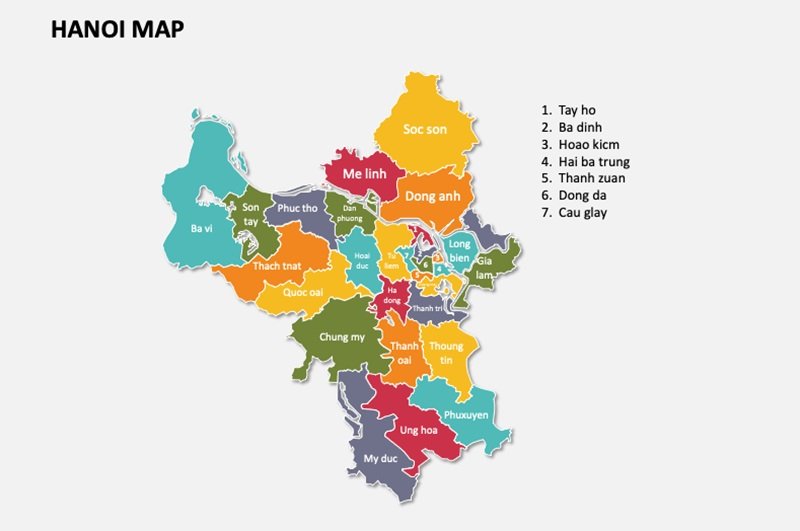
What Makes Hanoi Unique?
- Hanoi is more than just Vietnam’s capital—it’s a city steeped in centuries of history, layered with tradition, resilience, and cultural depth. Its name, “Hà Nội,” meaning “city inside rivers,” was formally bestowed in 1831 by Emperor Minh Mạng, reflecting the city’s geographic embrace by three key waterways: the Red River, the Nhue River, and the Day River. But even long before that official naming, Hanoi had already served as the heart of several Vietnamese dynasties, earning a reputation as the country’s enduring political and cultural nucleus.
- What sets Hanoi apart is its seamless blend of ancient and modern life. At its core lies the iconic Old Quarter, a maze of narrow alleys and centuries-old shophouses buzzing with life—where street vendors carry on time-honored trades, and motorbikes weave past temples and French colonial buildings. Each street is often named after the goods once sold there, preserving a living map of its merchant past.
- Yet step outside the historic districts, and you’ll find a different Hanoi—contemporary, creative, and evolving. Sleek cafes, art galleries, and modern skyscrapers rise alongside lakeside pagodas and quiet courtyards. The city’s thriving arts and coffee culture, especially around areas like Tay Ho and Ba Dinh, reflects a younger generation breathing new energy into Hanoi’s old soul.
- Unlike the fast-paced, cosmopolitan energy of Ho Chi Minh City in the south, Hanoi moves to a gentler rhythm. It’s a city where early morning tai chi in the parks, misty lakes, and the sound of bells from ancient temples still punctuate daily life. There’s a meditative calm in Hanoi, balanced by the hum of markets and conversations over cà phê trứng (egg coffee) in tucked-away courtyards.
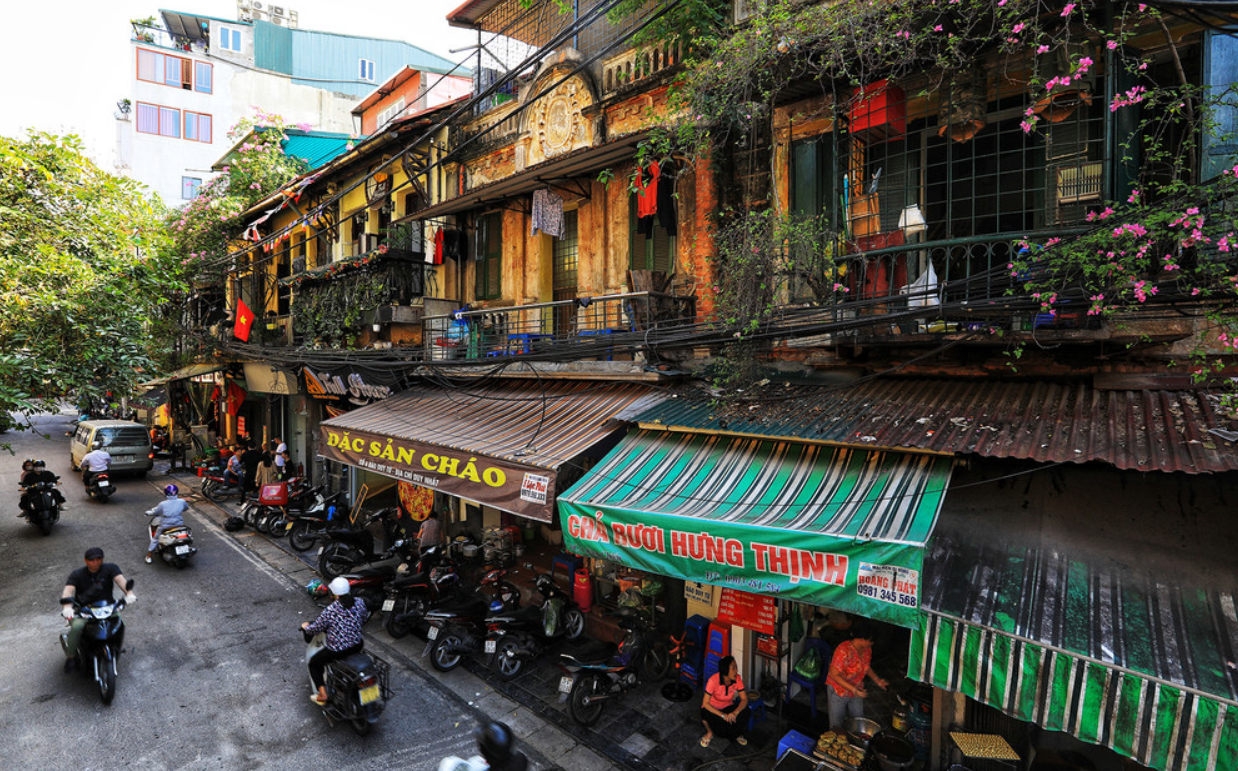
What Are the Top Attractions in Hanoi?
Hanoi is a city where ancient traditions and colonial elegance coexist with modern vibrancy. From tranquil lakes and storied temples to bustling alleyways and striking architecture, the capital offers a rich tapestry of experiences. These must-see attractions reveal the very soul of the city:
🏞 Hoan Kiem Lake (Lake of the Returned Sword)
Located in the heart of Hanoi, this scenic lake is steeped in legend. It’s said that Emperor Ly Thai To returned a magical sword here to the Golden Turtle God, who surfaced from the waters to reclaim it—a tale that continues to echo through Vietnamese folklore.
Stroll around the shaded pathways, admire the iconic Turtle Tower rising from a tiny islet, and cross the red Huc Bridge to Ngoc Son Temple, a beautiful shrine dedicated to General Tran Hung Dao and Vietnam’s literary and spiritual icons. On weekends, the surrounding streets become pedestrian-only zones filled with street performers, musicians, and families enjoying the open air.
🏘 The Old Quarter
This is Hanoi’s historical heart—a lively labyrinth of 36 ancient streets, each named after the craft or trade once practiced there. Hang Bac (Silver Street), Hang Gai (Silk Street), and Hang Ma (Paper Offerings Street) still buzz with the spirit of Vietnam’s artisanal past.
Wander the narrow lanes, try street food like pho bo or bun cha, and visit the Dong Xuan Market, a massive indoor marketplace established in the French colonial era. Here, you’ll find everything from dried seafood to souvenirs, woven into a chaotic yet captivating shopping experience.
🚂 Hanoi Train Street
Perhaps one of the city’s most photographed spots, this narrow residential alley comes to life as a train barrels through just inches away from homes and cafes. Locals sip coffee on doorsteps, tourists hold their breath for the perfect shot, and the whole experience is a surreal glimpse into Hanoi’s gritty resilience and community spirit.
(Note: Check for updated regulations, as access is sometimes restricted for safety.)
🏛 Hoa Lo Prison Museum
Originally built by the French to imprison Vietnamese revolutionaries, this somber site was later used during the Vietnam War to house American POWs—who nicknamed it the “Hanoi Hilton.”
Walk through stark prison cells, view artifacts and photographs, and reflect on the painful yet powerful narratives of Vietnam’s fight for independence.
- Hours: 8:00 AM – 5:00 PM (daily)
- Entry: 50,000 VND (~$2)
📚 Temple of Literature (Văn Miếu)
Founded in 1070, this peaceful complex served as Vietnam’s first national university, dedicated to Confucius and ancient scholars. Its serene courtyards, ponds, and pavilions offer a quiet retreat from city noise.
Don’t miss the 82 stone steles, each mounted on a turtle and inscribed with the names of those who passed imperial exams centuries ago.
Evenings come alive with night tours and 3D projection shows that illuminate the temple’s history and legacy.
- Night tours: Wed, Fri, Sat, Sun, 6:30–10:30 PM
- Tickets: 199,000 VND (book online or on-site)
🏯 Thang Long Imperial Citadel
Recognized as a UNESCO World Heritage Site, this sprawling complex spans over 1,300 years of Vietnamese political and royal history. Once the seat of dynastic power, it houses archaeological treasures, ancient foundations, and military bunkers from the 20th century.
Climb the historic Hanoi Flag Tower for panoramic city views, and continue next door to the Vietnam Military History Museum for a closer look at the country’s modern defense legacy.
👤 Ho Chi Minh Mausoleum Complex
This solemn site is where Vietnam’s beloved revolutionary leader, Ho Chi Minh, lies in state. Visitors from across the country come to pay respects to “Uncle Ho,” whose preserved body rests in a granite mausoleum.
The complex also includes the Presidential Palace, One Pillar Pagoda, and the Ho Chi Minh Museum, offering a deep dive into his life and legacy.
- Dress respectfully; no photography allowed inside the mausoleum.
🧑🤝🧑 Vietnam Museum of Ethnology
A must-visit for those curious about Vietnam’s cultural diversity, this museum showcases the lives, customs, and architecture of all 54 recognized ethnic groups.
Explore indoor exhibits, then wander the outdoor garden, where full-sized traditional houses—built by artisans from across Vietnam—are on display. Weekend water puppet shows add a delightful cultural touch for families and kids.
🏛 French Colonial Architecture
Hanoi’s colonial past is visible in its elegant buildings and boulevards. Highlights include:
- Long Bien Bridge – Designed by Gustave Eiffel’s firm, this steel bridge is a historic symbol of resilience, having survived bombings during multiple wars.
- Hanoi Opera House – A Beaux-Arts masterpiece modeled after the Palais Garnier in Paris.
- Metropole Hotel – Hanoi’s most iconic hotel, which has hosted presidents, writers, and celebrities since 1901.
- St. Joseph’s Cathedral – A neo-Gothic church built in 1886 that resembles Notre-Dame in Paris.
- Vietnam History Museum – Housed in a colonial-era building with exhibits spanning prehistoric to modern Vietnam.
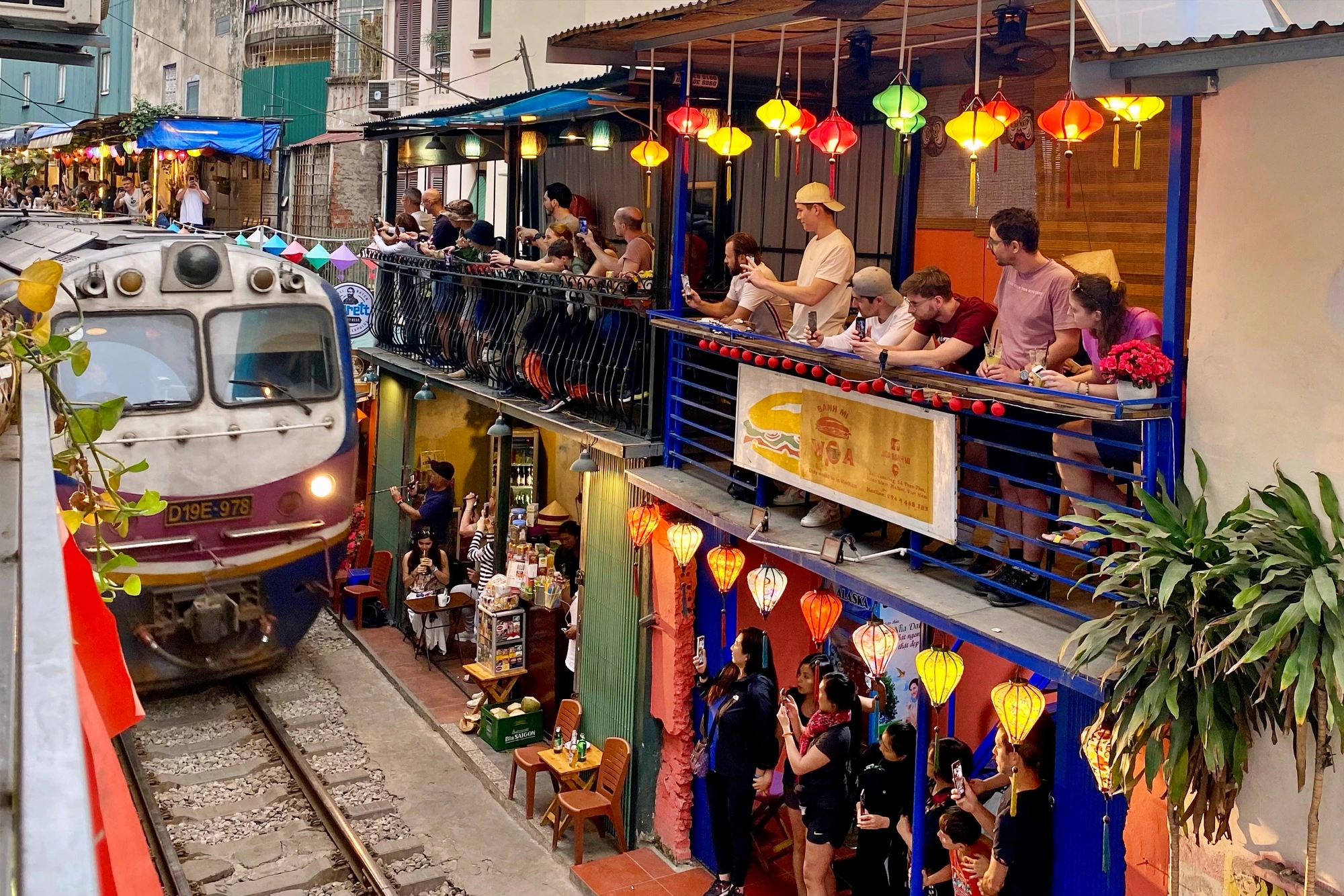
What Can You Visit Around Hanoi?
Just beyond the hustle and bustle of Hanoi lies a world of time-honored traditions, peaceful villages, and hands-on cultural experiences. These nearby destinations are perfect for half-day or full-day trips, offering a deeper look into Vietnam’s rural life and artisanal heritage. Here are some of the top places to explore around Hanoi:
🏘 Duong Lam Ancient Village (Approx. 50 km west of Hanoi)
Step back in time with a visit to Duong Lam, one of Vietnam’s best-preserved ancient villages. With its centuries-old laterite brick homes, moss-covered temples, and shady communal courtyards, Duong Lam offers a peaceful contrast to city life.
Rent a bicycle and glide through narrow alleyways, past banyan trees and rice fields. Highlights include Mong Phu Temple, traditional houses open to visitors, and the nearby Ngo Quyen and Phung Hung temples, dedicated to legendary national heroes. It’s not just a sightseeing trip—it’s a living museum of rural Vietnamese heritage.
🧶 Traditional Craft Villages Near Hanoi
Northern Vietnam is known for its village-based artisan culture, where families have passed down traditional crafts for generations. Visiting these villages provides both cultural enrichment and the chance to try your hand at the art forms themselves:
- 🎨 Bat Trang Ceramic Village (13 km southeast)
Located along the Red River, Bat Trang has been producing ceramics for over 700 years. Watch artisans mold, paint, and fire beautiful pottery, or take a turn on the wheel yourself. The village also has a pottery market, craft workshops, and photo spots with colorful ceramic walls. - 🖼 Dong Ho Painting Village (Approx. 30 km east)
Famed for its vivid woodblock prints, Dong Ho village preserves a unique folk art tradition that dates back to the 17th century. These colorful prints depict scenes of daily life, legends, and symbolism, and were once a Tet (Lunar New Year) staple in Vietnamese homes. You can learn about natural dyes, paper-making, and even create your own print to take home. - 🧵 Van Phuc Silk Village (10 km southwest)
Vietnam’s silk capital for over a thousand years, Van Phuc is a tranquil village lined with loom-filled workshops and colorful silk boutiques. Here, artisans still weave silk the traditional way—by hand or using vintage looms. It’s an ideal spot to shop for high-quality scarves, garments, and accessories while seeing how silk is made from thread to fabric. - 🔥 Quang Phu Cau Incense Village (35 km south)
One of Vietnam’s most photogenic villages, Quang Phu Cau is now famous on social media for its vibrant incense-drying courtyards. Bright red incense sticks are arranged in stunning radial patterns across open squares, creating surreal scenes perfect for photography. The village specializes in making incense for both domestic use and temple offerings, especially around Tet.
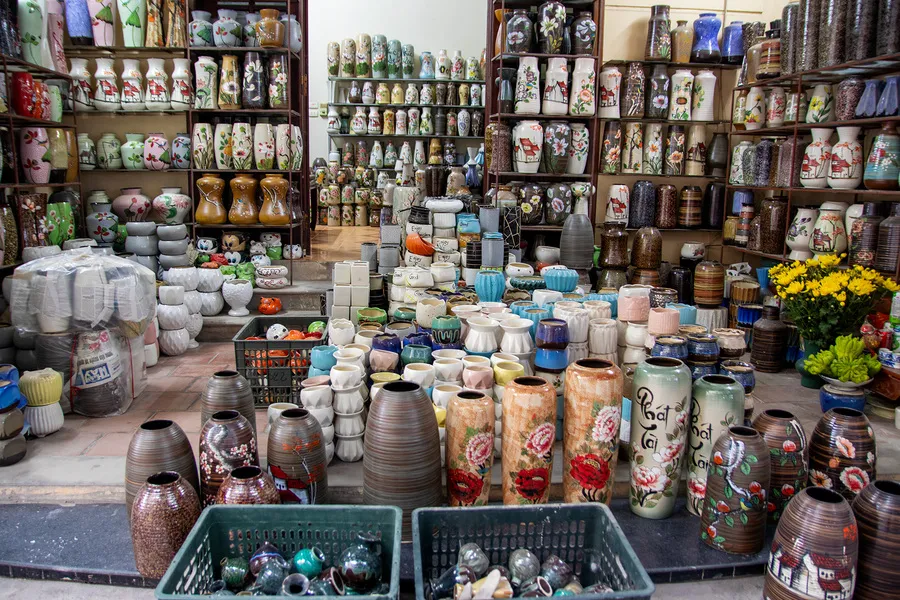
What to Do in Hanoi at Night?
When the sun sets over Hanoi, the city transforms. Streetlights cast a golden glow over colonial facades, lakes reflect the shimmer of evening lights, and the sound of live music, chatter, and sizzling street food fills the air. Whether you’re drawn to traditional arts or late-night energy, Hanoi after dark offers something truly special. Here are some of the top things to experience:
🎭 Watch a Water Puppet Show
Step into the magical world of múa rối nước, or water puppetry—a centuries-old Vietnamese art form that originated in the Red River Delta. Performed on a water stage accompanied by live traditional music, these shows bring to life rural legends, folk tales, and mythical creatures using intricately carved wooden puppets.
The most famous venue is the Thang Long Water Puppet Theater, located near Hoan Kiem Lake, where multiple nightly performances blend humor, folklore, and cultural storytelling.
- 📍 Location: 57B Dinh Tien Hoang St.
- ⏰ Showtimes: Typically between 4:00 PM – 8:00 PM
- 🎟 Tickets: From 100,000 VND (~$4)
🌾 Experience The Quintessence of Tonkin
For a truly grand and immersive evening, head to the countryside of Quoc Oai (about 40 minutes from central Hanoi) for The Quintessence of Tonkin—a breathtaking outdoor performance set on a lake.
This large-scale show blends traditional music, water puppetry, folk dance, and historical storytelling, all projected onto a watery stage with real villagers, live animals, and elaborate lighting effects. It’s a visual tribute to northern Vietnam’s cultural roots, presented with world-class production value.
- 📍 Location: Baara Land, Quoc Oai District
- ⏰ Showtime: Usually at 7:30 PM (check schedule)
- 🎟 Tickets: From 400,000 VND (~$16)
- 🚗 Tip: Tours and shuttle service available from central Hanoi
🍻 Unwind on Tạ Hiện Street (Beer Street)
For a more casual, energetic night out, make your way to Tạ Hiện Street in the Old Quarter—Hanoi’s legendary nightlife hub. By evening, this narrow lane comes alive with plastic stools, glowing signs, clinking glasses, and the laughter of both locals and backpackers.
Grab a glass of fresh draft beer (bia hơi) for under a dollar, munch on grilled skewers or fried spring rolls, and soak in the buzzing street-side atmosphere. Bars, live music venues, and nightclubs also dot the nearby blocks for those looking to party into the early hours.
- 🍺 Tip: It’s busiest on weekends and particularly lively after 8:00 PM
- 🍢 Must-try snacks: Grilled squid, fermented pork rolls (nem chua), and buttery fried corn
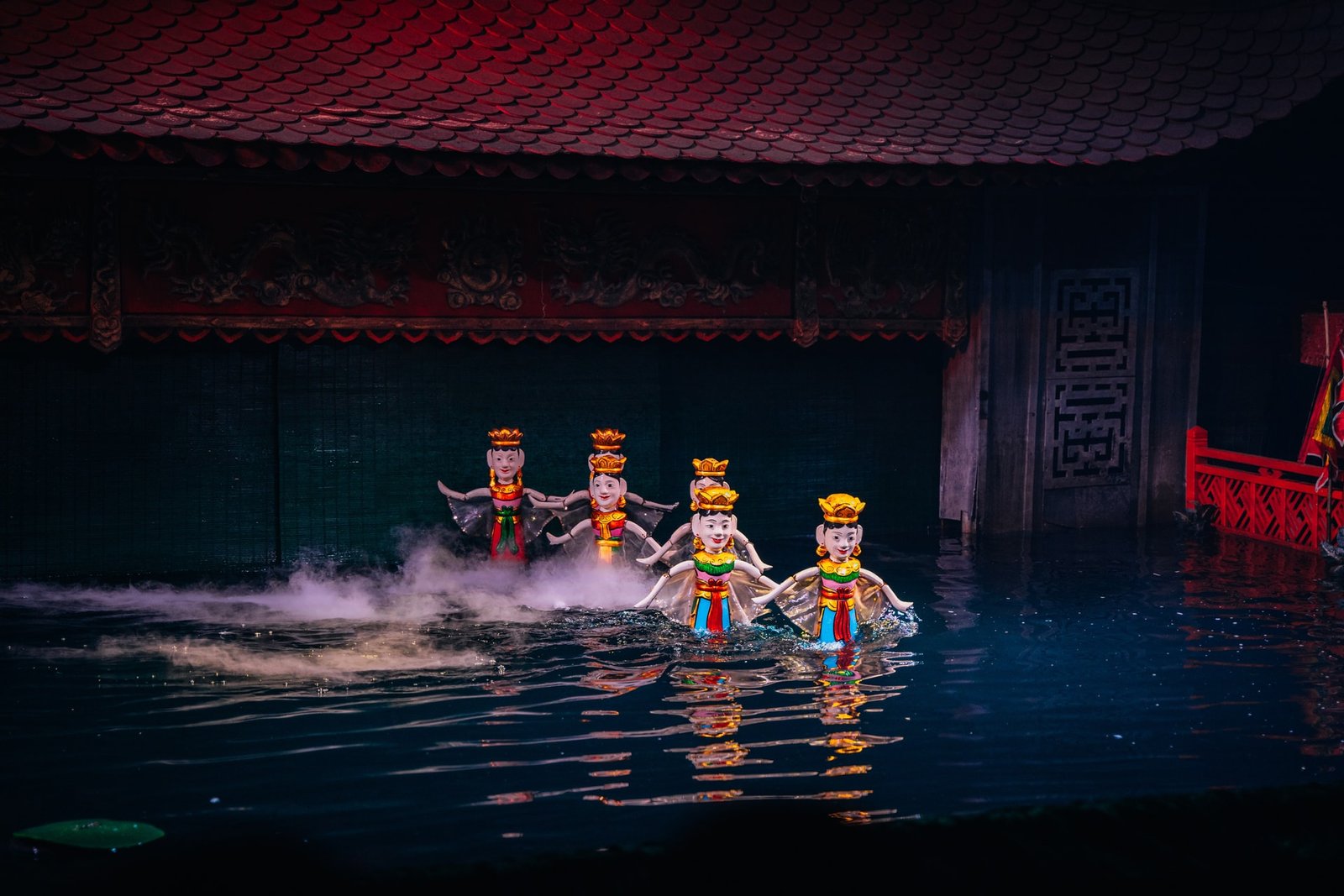
What to Eat and Drink in Hanoi?
Hanoi’s culinary scene is a delicious reflection of its rich history and northern heritage. Unlike the bold, spicy dishes of central and southern Vietnam, Hanoian cuisine is delicate, balanced, and all about harmony—light broths, fresh herbs, subtle sweetness, and nuanced seasoning. The best meals here are often found at street-side stalls or humble family-run eateries, where time-honored recipes have been passed down for generations.
Here’s what you absolutely can’t miss:
🍜 Must-Try Dishes
- Phở
Vietnam’s most iconic dish, and Hanoi is its birthplace. This steaming bowl of flat rice noodles in a clear, fragrant beef or chicken broth is seasoned with star anise, cinnamon, and charred ginger, then topped with sliced meat and fresh herbs.
Pro tip: Locals eat it for breakfast—head to Phở Gia Truyền Bát Đàn for an authentic experience. - Bún chả
A true Hanoi classic made famous globally by Anthony Bourdain and Barack Obama, this dish features grilled pork patties and caramelized pork belly slices, served in a tangy fish sauce broth alongside vermicelli noodles, herbs, and crispy spring rolls.
It’s smoky, sweet, savory, and totally addictive. - Nem rán (Spring Rolls)
These crispy, golden parcels are packed with minced pork, mushrooms, glass noodles, and vegetables, then deep-fried until crackling. Often served with dipping sauce and herbs, they’re a must-have starter or snack. - Bánh cuốn
Soft, steamed rice rolls filled with minced pork and wood ear mushrooms, topped with fried shallots and served with a light dipping sauce. This elegant dish showcases the finesse of northern cuisine. - Chả cá Lã Vọng
A uniquely Hanoian specialty: turmeric-marinated fish pan-fried with heaps of dill and spring onions, served at the table with rice noodles, peanuts, herbs, and fermented shrimp paste. Try it at the original Chả Cá Lã Vọng restaurant on Cha Ca Street.
🥤 Must-Try Drinks
- Bia hơi (Fresh Beer)
Light, unfiltered, and brewed daily, bia hơi is Vietnam’s most affordable beer—often under 10,000 VND (less than $0.50) a glass. It’s not about the alcohol content; it’s about socializing on tiny stools with locals in casual sidewalk joints. Head to Bia Hơi Corner in the Old Quarter to join the fun. - Cà phê trứng (Egg Coffee)
Invented in Hanoi in the 1940s, this drink is a local treasure. Strong Vietnamese coffee is topped with a creamy, custard-like foam made from whipped egg yolk, sweetened condensed milk, and vanilla. Served hot or iced, it’s like drinking a coffee-flavored tiramisu.
Try it at Cafe Giảng, the original creator.
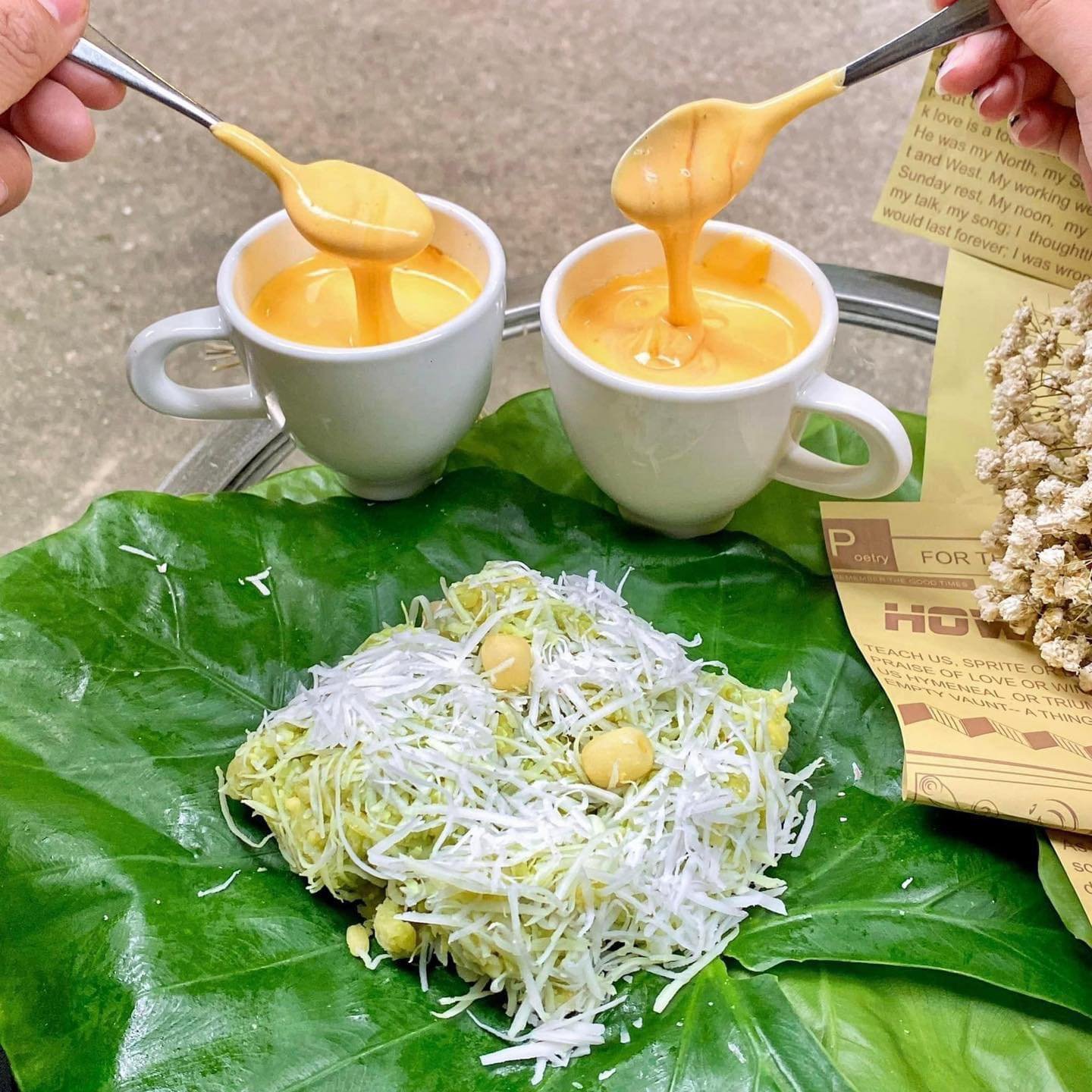
When Is the Best Time to Visit Hanoi?
Hanoi experiences all four distinct seasons, giving the city a dynamic charm that changes throughout the year. Each season offers a different kind of beauty—whether you’re drawn to blooming flowers, golden sunlight, or atmospheric mists. Here’s what to expect during each:
🌸 Spring (February to mid-April)
Spring is one of the most charming and festive times to visit Hanoi. Temperatures are mild, averaging around 18–25°C (64–77°F), and the city bursts into color with peach blossoms, kumquat trees, and orchids blooming everywhere.
- The city buzzes with excitement during Tết (Lunar New Year), Vietnam’s most important holiday, when streets are lined with decorations and traditional rituals come to life.
- Parks and lakes—especially Hoan Kiem and West Lake—are perfect for peaceful walks among fresh greenery.
☀️ Summer (mid-April to August)
Expect hot, humid weather with temperatures often exceeding 35°C (95°F) and occasional tropical downpours, particularly in June and July. While it’s not the most comfortable for sightseeing, summer has its own rewards:
- Lotus flowers bloom in West Lake, offering serene photo ops and lotus tea experiences.
- Lively markets overflow with tropical fruits like lychees, rambutans, and mangosteens.
- Fewer tourists mean shorter lines and more local vibes.
🍂 Autumn (September to mid-November)
This is widely considered the best time to visit Hanoi. The weather is pleasant and dry, with daytime temperatures around 25°C (77°F), clear blue skies, and a gentle breeze.
- Fallen dracontomelon (sấu) leaves line the sidewalks, creating a romantic golden carpet through the French Quarter.
- Locals say Hanoi is at its most poetic in autumn, perfect for sipping egg coffee at outdoor cafés or exploring on foot.
- It’s also a great time for photography, festivals, and street food adventures.
❄️ Winter (mid-November to January)
Hanoi’s winter is cool, misty, and atmospheric, with temperatures dipping to around 10–18°C (50–64°F). While it rarely snows, the chilly air and gray skies give the city a soft, introspective vibe.
- Wear layers and enjoy hearty winter dishes like phở, hotpot (lẩu), and sticky rice treats.
- Street vendors sell roasted chestnuts and grilled corn, perfect for warming up on the go.
- The fog around West Lake or Long Bien Bridge adds a cinematic quality to your travel photos.
In short:
- 🌤 For the best overall weather and ambiance: Visit in autumn (Sept–mid-Nov)
- 🌸 For culture and springtime beauty: Try late January to early March
- ☀️ For off-season travel and lotus season: Brave the summer heat in June or July
- ❄️ For fewer crowds and cozy winter charm: Choose late November to January
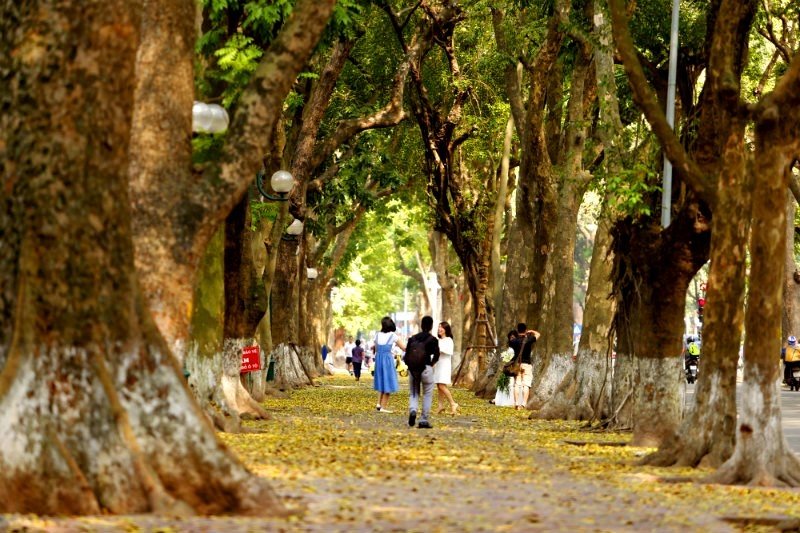
Final Thoughts
Hanoi is more than just a capital—it’s a city that breathes history and tradition while embracing modern life. With its legendary food, cultural depth, and welcoming locals, it offers a rich and rewarding experience for any traveler.
Whether you’re here for a few days or a few weeks, Hanoi invites you to slow down, look deeper, and connect with its timeless soul.
Need help planning your Hanoi adventure? Let us craft a custom itinerary based on your interests and schedule. Reach out anytime!

